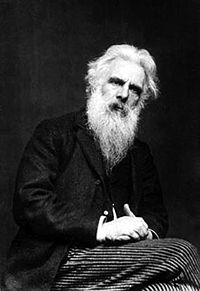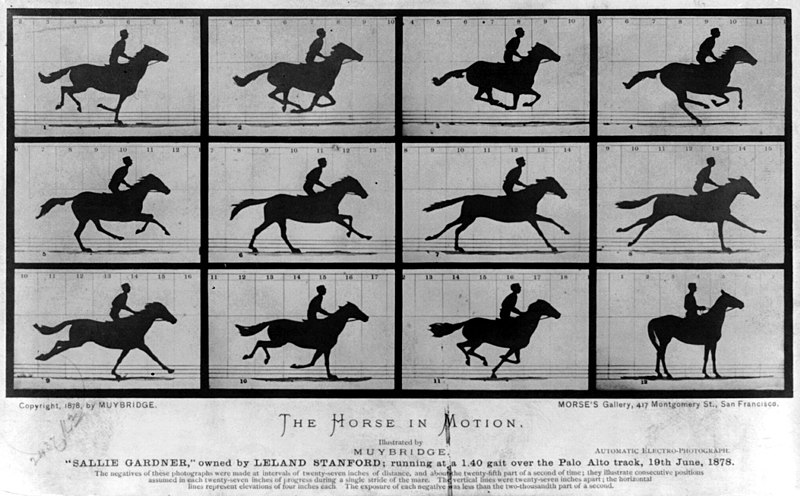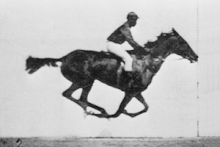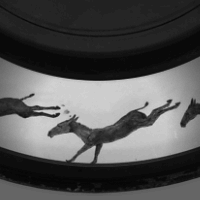 |
| Eadweard Muybridge |
Muybridge is known as the 'father of the motion picture', his early experiments created the foundation for the modern cinema, with his study, The Horse in Motion (1882), regarded as the first ever moving picture.
The Horse in Motion:
Eadweard was hired by the Governor of California in 1882 to prove scientifically that when a horse gallops it becomes airborne. Parallel to the racing track, he aligned a series of fifty cameras, each with a specially designed rapid shutter, and by connecting them to trip wires lain across the track, he ensured each one automatically took its own picture as the horse sped by and the string broke. By projecting pictures in rapid succession, he laid the groundwork for the development of motion pictures cameras, and hence the entire cinematic industry.
Zoopraxiscope:
Eadweard Muybridge created this device in 1879 and is an early device for displaying motion pictures - it is often considered as the first movie projector.
The zoopraxiscope projected images from rotating glass disks in rapid succession to give the impression of motion. The stop-motion images were initially painted onto the glass, as silhouettes.
It appears that the device was inspired by Thomas Edison and William Kennedy Dickinson's Kinetoscope, the first commercial film exhibition system.
Images from all of the known seventy-one surviving zoopraxiscope discs have recently been reproduced in the book Eadweard Muybridge: The Kingston Museum Bequest.
The Horse in Motion:
Eadweard was hired by the Governor of California in 1882 to prove scientifically that when a horse gallops it becomes airborne. Parallel to the racing track, he aligned a series of fifty cameras, each with a specially designed rapid shutter, and by connecting them to trip wires lain across the track, he ensured each one automatically took its own picture as the horse sped by and the string broke. By projecting pictures in rapid succession, he laid the groundwork for the development of motion pictures cameras, and hence the entire cinematic industry.
 |
| The Horse in Motion by Eadweard Muybridge |
 | ||||||||
| Galloping horse, animated in 2006 using the photos by Eadweard Muybridge |
Zoopraxiscope:
Eadweard Muybridge created this device in 1879 and is an early device for displaying motion pictures - it is often considered as the first movie projector.
The zoopraxiscope projected images from rotating glass disks in rapid succession to give the impression of motion. The stop-motion images were initially painted onto the glass, as silhouettes.
It appears that the device was inspired by Thomas Edison and William Kennedy Dickinson's Kinetoscope, the first commercial film exhibition system.
Images from all of the known seventy-one surviving zoopraxiscope discs have recently been reproduced in the book Eadweard Muybridge: The Kingston Museum Bequest.
 |
| Zoopraxiscope |
 |
| Zoopraxiscope disc by Eadweard Muybridge |

No comments:
Post a Comment